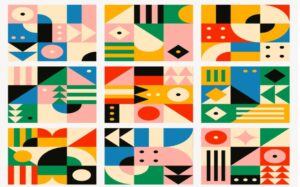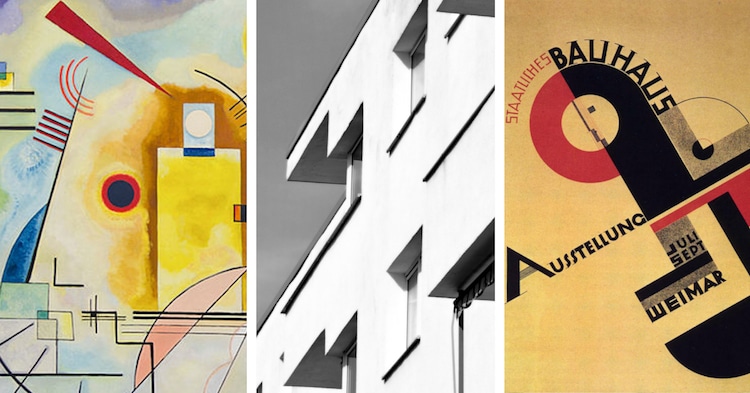What is Bauhaus?
Bauhaus was a special art school that started in Germany a long time ago. It was all about making things look good and work well. Imagine your room – if you keep it simple and everything has a purpose, it looks nicer, right? That’s Bauhaus! It’s like saying, “less is more” but in a really cool way.
This German design school’s impact stretched far beyond its borders. In cities with iconic skylines and underground systems, you can spot the clean lines and practical focus Bauhaus championed. Even the way people dress and the gadgets they use show traces of this influential movement. It’s evident in bauhaus art examples like the Wassily Chair and the geometric designs of Oskar Schlemmer’s performances. It’s like Bauhaus had a secret mission to shape the world, and it succeeded, influencing over half of the globe’s top design institutions. From bustling metropolises to quiet neighborhoods, the echo of Bauhaus can be heard in the rhythm of modern life.

Key principles of bauhaus
Bauhaus wasn’t just about being pretty. It had rules. First, things should look like they belong. For example, a chair should look like a chair, not a spaceship. Second, simple is best. Don’t overcomplicate things. Third, art and making stuff go hand-in-hand. They’re like peanut butter and jelly – better together.
Famous bauhaus artists and their works
Bauhaus had some super talented students. Let’s meet a few:
- Walter gropius: He was like the boss of the school. He built amazing buildings that were simple and modern. His most famous work is the Bauhaus building itself.
- Paul klee: He loved colors and shapes. His paintings look like fun puzzles. His “Red Balloon” is super famous.
- Wassily kandinsky: He was all about colors and how they make you feel. His paintings are full of energy. “Composition VIII” is a big deal.
- Marcel breuer: He made awesome chairs that are still popular today. They’re comfy and stylish. His Wassily Chair is a classic.
Bauhaus influence on modern design
Bauhaus changed how we see things. The simple, clean look you love in your phone or your favorite coffee shop? That’s Bauhaus. It’s like Bauhaus had baby designers, and now they’re everywhere!
Did you know? Over 50% of the world’s top design schools teach Bauhaus principles. It’s that big of a deal!
Bauhaus today is a living legacy
Even though the Bauhaus school closed a long time ago, its ideas are still hot. Designers and artists still use Bauhaus to make cool stuff. It’s like old jeans – never go out of style. In fact, the Bauhaus spirit is more relevant than ever, as our world becomes increasingly cluttered and complex. Its focus on simplicity and functionality offers a refreshing antidote to modern chaos.
Bauhaus in everyday life
Bauhaus isn’t just for fancy art galleries. It’s in our world! Check this out:
- Your phone: Simple design, easy to use. That’s Bauhaus!
- Modern kitchens: Clean lines, lots of storage. Totally Bauhaus.
- Your favorite coffee shop: Minimalist decor, focus on the drink. Bauhaus at work.
- Fashion trends: Simple cuts, neutral colors. Bauhaus is back!
You can even find Bauhaus in unexpected places. Think about the way your city is laid out, or the design of your car. There’s probably a bit of Bauhaus in there too.
Bauhaus and the rise of modern cities
Bauhaus ideas also shaped how our cities look. Places like the Barbican Centre in London show off the bold, boxy style of Bauhaus architecture. And let’s not forget about the London Underground. Simple signs and clear directions? That’s Bauhaus making our lives easier!
Bauhaus education and its legacy
The influence of Bauhaus goes beyond buildings and products. Schools like the Royal College of Art in London carry on the Bauhaus spirit by teaching future designers and artists. The Tate Modern, also in London, showcases Bauhaus art, inspiring new generations to explore this creative movement.
Conclusion
So, there you have it! Bauhaus was more than just an art school; it was a way of thinking about design. From the simple beauty of its art to the practical impact on our everyday lives, Bauhaus has left an undeniable mark on the world.
Whether it’s the sleek design of your phone or the modern look of your kitchen, chances are you’ve encountered Bauhaus without even realizing it. Its focus on form and function, simplicity, and the connection between art and craft continues to inspire designers and artists today.
So, the next time you admire a clean, functional design, remember: you might be looking at a little bit of Bauhaus magic.




